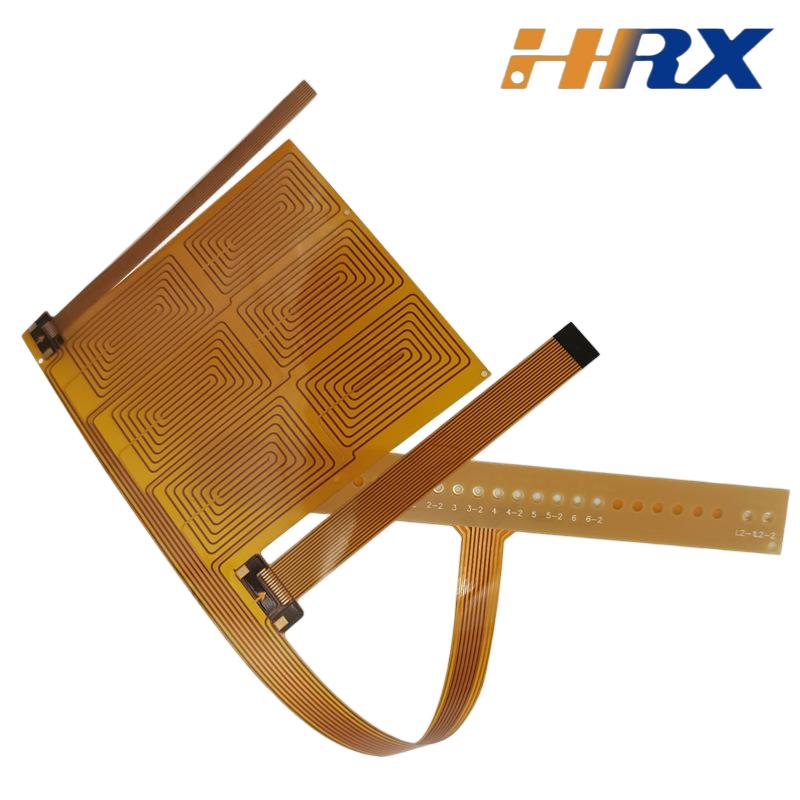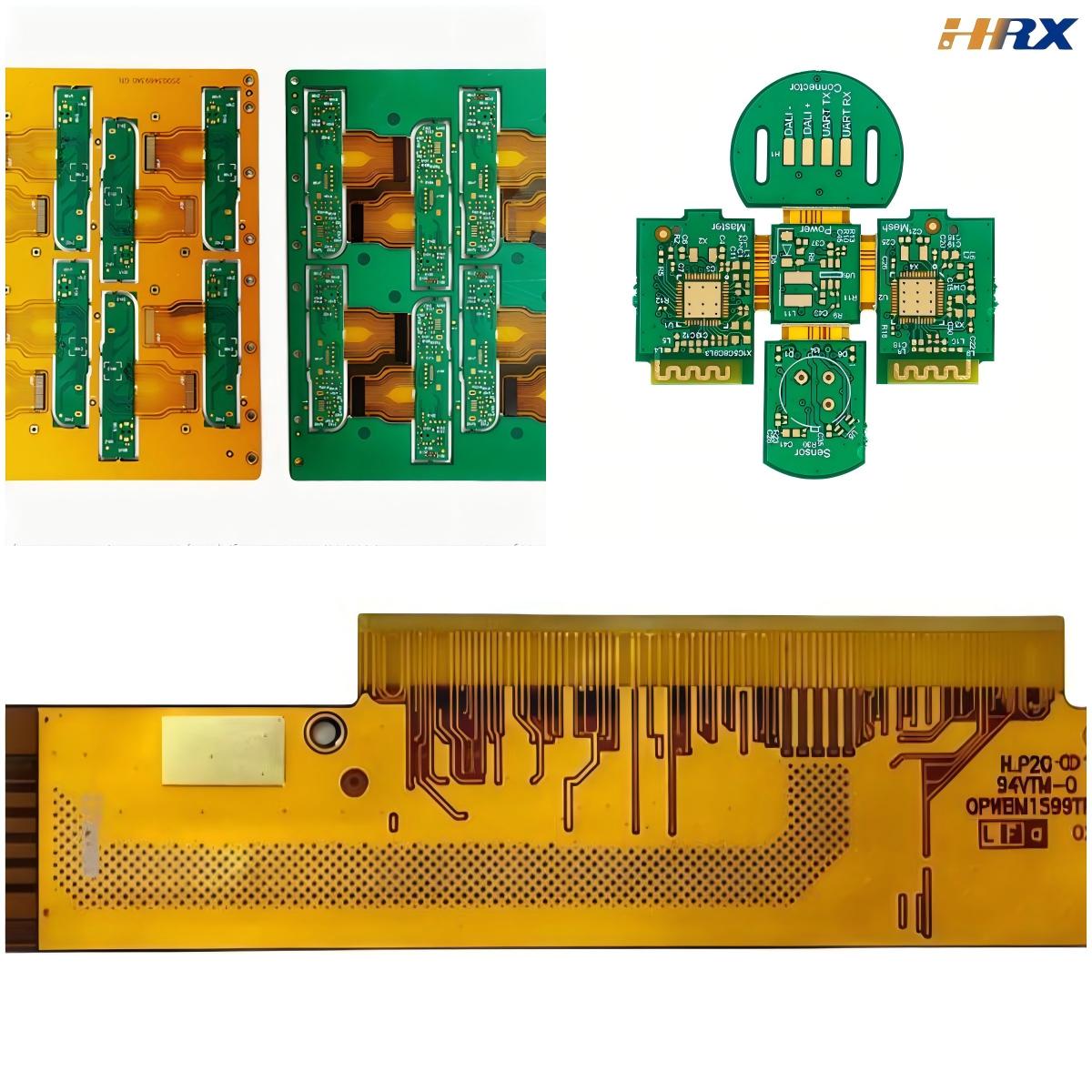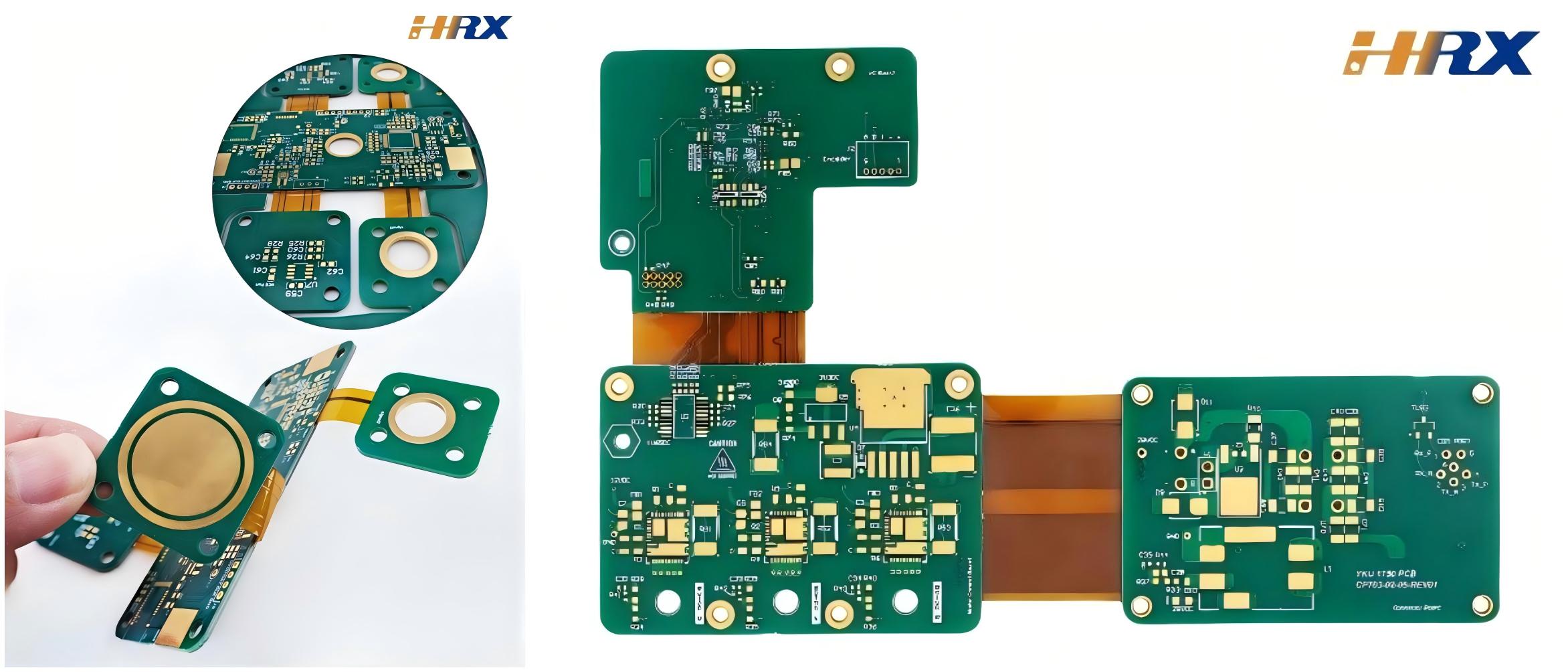Search
FPC & Rigid-Flex PCB: Key Insights in Design, Manufacturing & Quality Control for High-Performance Electronics
- Jul 14,2025
-
Share
In the fast-evolving electronics industry, Flexible Printed Circuits (FPC) and Rigid-Flex PCBs have become cornerstones of innovation, enabling breakthroughs in device miniaturization, 3D packaging, and reliability. Rigid-Flex PCBs, as a hybrid of rigid substrates and flexible circuits, are redefining design possibilities in complex electronic assemblies—from wearable tech to aerospace systems. This guide delves into critical considerations for FPC and Rigid-Flex PCB success, with insights from Shenzhen Huaruixin Electronics Co., Ltd., a leading ODM/OEM manufacturer with deep expertise in flexible circuit solutions.

1. Design Fundamentals: Critical Factors for FPC & Rigid-Flex Performance
Effective FPC and Rigid-Flex PCB design hinges on mastering material science, circuit topology, and mechanical durability.
Flexible Substrate Selection: The core of FPCs lies in substrates like polyimide (PI) and polyester (PET), with PI dominating high-reliability applications due to its -269°C to 400°C temperature resistance and excellent dielectric strength (30-40 kV/mm). Copper cladding—ranging from 1/3 oz to 3 oz—must align with current-carrying requirements, while coverlay (PI or PET) and adhesives (acrylic, epoxy) protect traces without restricting flexibility.
Rigid-Flex Transition Zones: In Rigid-Flex designs, the flex-to-rigid interface demands precision. Avoiding copper dominance (over 70% coverage) in flex areas prevents stress cracking, while trace routing with 45° angles and uniform spacing reduces bending fatigue. Impedance control (50Ω, 75Ω, 100Ω) is non-negotiable for high-speed signals, requiring tight control over trace width, dielectric thickness, and copper roughness.
Stiffener Integration: For FPCs requiring localized rigidity (e.g., connector areas), stiffeners (aluminum, FR4) must be sized to avoid interference with flex motion, with adhesive bonding ensuring peel strength >0.5 N/cm.
Shenzhen Huaruixin Electronics excels in DFM (Design for Manufacturability) for FPCs and Rigid-Flex PCBs. Their engineering team optimizes stack-up designs (2-20 layers), bend radius calculations (minimum 3x substrate thickness for static flex, 5x for dynamic flex), and thermal management (via copper pours and heat sinks) to balance performance and manufacturability.
2. Manufacturing Excellence: Precision Processes for FPC & Rigid-Flex
FPC and Rigid-Flex PCB manufacturing demands advanced processes to meet strict tolerances and reliability standards.
Circuit Formation: Photoimaging with high-resolution photoresists (50μm line/space) ensures precise trace definition, followed by etching (acid or alkaline) to achieve uniform copper removal—critical for maintaining flex life (≥10,000 cycles for dynamic applications).
Lamination & Bonding: For Rigid-Flex PCBs, sequential lamination bonds rigid FR4 sections to flexible PI substrates, with controlled pressure (10-30 kgf/cm²) and temperature (160-200°C) to prevent delamination and ensure interlayer adhesion (>1.5 N/cm).
Drilling & Plating: Laser drilling (for micro-vias ≤100μm) and mechanical drilling (for through-holes) create reliable interconnections, followed by electroless copper plating (0.5-1μm) and electrolytic plating (15-30μm) to ensure via conductivity and solderability.
Huaruixin’s state-of-the-art facilities leverage automated manufacturing lines for FPCs and Rigid-Flex PCBs, including AOI (Automated Optical Inspection) for trace defects and AXI (Automated X-ray Inspection) for hidden via issues. Their expertise in high-volume production (10k-1M+ units/month) and low-volume prototyping ensures consistent quality across all order sizes.
3. Quality Control: Ensuring FPC & Rigid-Flex Reliability
Stringent quality checks are vital to validate FPC and Rigid-Flex PCB performance in end-use environments.
Electrical Testing: Flying probe testing (for low-volume runs) and bed-of-nails testing (for high-volume production) verify continuity, isolation (≥100MΩ at 500V DC), and impedance accuracy (±10% of design specs).
Mechanical & Environmental Testing:
Dynamic flex testing: Simulates real-world motion (10-300 cycles/min) to validate flex endurance without trace cracking.
Thermal cycling: -55°C to +125°C (1,000 cycles) to check for solder joint integrity and material stability.
Moisture resistance: 85°C/85% RH (1,000 hours) to prevent corrosion and dielectric breakdown.
Visual Inspection: 2D/3D optical systems check for coverlay misalignment (<25μm), copper exposure, and stiffener bonding defects—critical for preventing field failures.
Huaruixin adheres to IPC-2223 (FPC standards) and IPC-2226 (Rigid-Flex standards), with a Six Sigma quality management system to ensure <50 ppm defect rates. Their in-house testing lab conducts life cycle analysis to validate long-term reliability.
4. Industry Applications: FPC & Rigid-Flex Solutions Across Sectors
FPCs and Rigid-Flex PCBs drive innovation in key industries:
Medical Devices: Bio-compatible FPCs (USP Class VI materials) enable miniaturization in pacemakers, endoscopes, and wearable monitors, with sterilization resistance (autoclave, EtO) ensuring longevity.
Aerospace & Defense: High-reliability Rigid-Flex PCBs withstand extreme temperatures (-65°C to +150°C) and vibration (20-2,000 Hz), reducing weight by 30% vs. wired assemblies.
Consumer Electronics: Foldable display FPCs (with ultra-thin PI substrates ≤25μm) enable seamless hinge designs in smartphones and laptops, while Rigid-Flex modules in IoT devices simplify assembly and reduce size.
Why Partner with Huaruixin Electronics?
As a leading FPC manufacturer and Rigid-Flex PCB supplier, Shenzhen Huaruixin Electronics combines technical expertise with manufacturing scalability. Their capabilities include:
Custom FPC solutions: From single-layer flex circuits to complex multi-layer Rigid-Flex designs.
Advanced materials: Access to high-performance substrates (Kapton®, Pyralux®) and specialty adhesives.
Fast turnaround: Prototyping in 3-5 days, mass production in 2-3 weeks.
With a focus on customer collaboration, Huaruixin delivers tailored solutions that meet unique project requirements—whether for high-volume consumer electronics or low-volume, high-reliability aerospace systems.
Connect with Us for FPC & Rigid-Flex Expertise
If you’re seeking reliable FPC manufacturing, Rigid-Flex PCB design support, or insights into flexible circuit technologies, partner with Huaruixin Electronics.
Explore our expertise: www.hrxfpc.com
Reach our technical team: sales@hrxfpc.com
Let’s collaborate to develop high-performance FPC and Rigid-Flex solutions that drive your next innovation.

Let’s talk! We’ll provide the perfect solution for you!
-
 Huaruixin Electronics mainly produces printed circuit boards as the core business, to provide customers with one-stop solutions for FPC/PCB production, components sourcing and Assembly.
Huaruixin Electronics mainly produces printed circuit boards as the core business, to provide customers with one-stop solutions for FPC/PCB production, components sourcing and Assembly. - WHAT WE DO — PCB Design Solutions — Flex PCB Production — Components Sourcing — FPC&PCB Assembly
- PRODUCTS — Single Sided Flexible Circuits — Double Sided Flexible Circuits — Multilayer Flexible Cirucits — Rigid-Flex Circuits — FPC Assembly — PCB Assembly
- CAPABILITY — FPC Capability — Rigid-Flex Capability — PCB Capability — Assembly Capability
- Copyright © 2024 Shenzhen Huaruixin Electronics Co., Ltd. All Rights Reserved.
- Design By BONTOP


